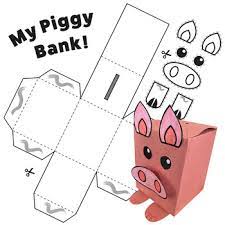In a world where financial stability is a priority, understanding the average return on investment (ROI) from various passive income opportunities is crucial. Whether you are a seasoned investor or someone exploring different avenues to generate passive income, this article will shed light on what you can expect from your investments.
Passive income: Expected Average Return on Investment

Defining Passive Income
First, let’s clarify what passive income is. Passive income refers to earnings generated with minimal effort or active involvement. It’s money earned while you’re sleeping, as the saying goes. It can come from a variety of sources, including investments, real estate, royalties, and more.
Importance of Diversifying Income Streams
Diversifying income streams is a smart financial move. It helps spread risk and ensures that if one source of income is underperforming, others may compensate. This diversification can include both traditional and emerging passive income opportunities.
Traditional Investment Options
Stocks
Historically, stocks and bonds have been go-to options for investors. Stocks can provide an average annual return of around 7-10%. However, it is important to note that the ROI can vary widely from year to year. For example, in some years, the stock market may generate returns of 20% or more, while in other years, it may generate negative returns.
Factors that affect stock ROI
A number of factors can affect the ROI of stocks, including:
- The company’s financial performance: Companies with strong financial performance are more likely to generate higher returns for investors.
- The overall market conditions: When the stock market is doing well, investors are more likely to buy stocks, which can drive up the prices of stocks.
- The company’s industry: Some industries are more cyclical than others, meaning that they experience periods of growth and decline. Stocks in cyclical industries may be more volatile than stocks in non-cyclical industries.
- The company’s management team: A strong management team can help to guide the company to success, which can lead to higher returns for investors.
- Investor sentiment: Investor sentiment can also play a role in stock prices. If investors are bullish on a particular stock, its price will likely rise. If investors are bearish on a particular stock, its price will likely fall.
Dividend Stocks
Average ROI
The average ROI for dividend stocks is around 7%. However, the ROI can vary widely depending on the company and the overall market conditions. For example, some companies pay dividends of 10% or more, while others pay dividends of 3% or less.
Factors that affect ROI
The following factors can affect the ROI of dividend stocks:
- The company’s financial performance: Companies with strong financial performance are more likely to pay dividends and to increase their dividend payments over time.
- The overall market conditions: When the stock market is doing well, investors are more likely to buy dividend stocks, which can drive up the prices of these stocks and reduce the dividend yield.
- The company’s dividend policy: Some companies have a policy of paying out a certain percentage of their profits in dividends, while others have a more discretionary approach.
Bonds
bonds tend to offer a more conservative but steadier return, usually in the 3-5% range.
Factors that affect bond ROI
The following factors can affect the ROI of bonds:
- Interest rates: When interest rates rise, bond prices typically fall. This is because investors can buy new bonds with higher interest rates, making older bonds with lower interest rates less attractive.
- Inflation: When inflation rises, the value of bond payments decreases. This is because the purchasing power of money decreases over time due to inflation.
- Bond quality: Bonds with higher credit quality (i.e., lower risk of default) typically offer lower yields than bonds with lower credit quality.
- Bond maturity: Bonds with longer maturities typically offer higher yields than bonds with shorter maturities. This is because investors take on more risk by investing in bonds with longer maturities.
Real Estate
Investing in real estate can yield good returns, averaging around 7-12%, depending on the property type and location. Real estate can offer both rental income and property appreciation.
Factors that affect ROI
The following factors can affect the ROI of rental properties:
- The location of the property: Rental properties in desirable locations are typically more expensive to purchase, but they can also generate higher rental income.
- The type of property: Single-family homes are typically easier to manage than multi-family homes, but multi-family homes can generate higher rental income.
- The rental market: Rental markets in major metropolitan areas are typically more competitive, but they can also generate higher rental income.
Savings Accounts
Savings accounts are one of the safest forms of passive income, albeit with lower returns, typically around 0.5-2% annually. They provide security but might not beat inflation.
Factors that affect savings account ROI
The following factors can affect the ROI of savings accounts:
- Interest rate: The interest rate is the most important factor that affects the ROI of savings accounts. The higher the interest rate, the higher the ROI.
- Account fees: Some savings accounts charge monthly fees or fees for certain transactions. These fees can reduce the ROI of your savings account.
- Minimum balance requirements: Some savings accounts have minimum balance requirements. If you do not maintain the minimum balance, you may be charged a fee or your interest rate may be reduced.
Emerging Passive Income Opportunities
Emerging opportunities offer investors new ways to earn passive income.
Peer-to-Peer Lending
Peer-to-peer lending platforms enable you to earn interest by lending money to individuals or small businesses. Returns can range from 5% to 10%, with higher risk associated with higher returns.
Dividend Stocks
Investing in dividend stocks can provide both stock appreciation and regular dividend payments. Average ROI varies, but it can be 5-7% on average.
Affiliate Marketing
Affiliate marketing involves promoting products and earning a commission on sales. ROI in affiliate marketing can vary greatly but can go well above 10% with the right strategies.
Average ROI in Traditional Investments
The average ROI in traditional investments generally falls within the ranges mentioned earlier. It’s important to note that these returns can fluctuate based on economic conditions, market trends, and the individual investments you choose.
Average ROI in Emerging Passive Income Opportunities
Newer opportunities like peer-to-peer lending, dividend stocks, and affiliate marketing have the potential to offer higher ROI. However, these options also come with increased risk, and returns can fluctuate widely.
Factors Influencing ROI
The ROI you can expect is influenced by various factors:
Risk
Higher-risk investments often come with the potential for greater returns, but they also carry a higher chance of loss.
Market Conditions
Market conditions play a significant role. Economic downturns can impact the performance of stocks, bonds, and real estate.
Duration of Investment
The longer you hold an investment, the more likely you are to ride out market volatility and benefit from compounding returns.
Maximizing ROI
To maximize your ROI, it’s crucial to diversify your investments, consider your risk tolerance, and stay informed about market trends. A well-thought-out investment strategy is your best tool for achieving your financial goals.
Conclusion
In conclusion, the average ROI from passive income opportunities can vary widely. Traditional investments like stocks, bonds, and real estate provide relatively stable returns, while emerging opportunities such as peer-to-peer lending, dividend stocks, and affiliate marketing offer the potential for higher returns but come with increased risk. Understanding your risk tolerance and having a diversified investment portfolio is key to achieving your financial goals.
FAQs
- What is the safest passive income option?
- Savings accounts are considered one of the safest options, albeit with lower returns.
- Are emerging passive income opportunities riskier than traditional investments?
- Yes, emerging opportunities often carry higher risks but can also offer higher returns.
- How can I start with affiliate marketing?
- To start with affiliate marketing, you can join affiliate programs of companies and promote their products or services through your online platforms.
- Can I invest in both traditional and emerging passive income opportunities?
- Yes, diversifying your investments across both traditional and emerging options is a prudent strategy.
- What should I consider before investing in real estate for passive income?
- Consider location, property type, and market conditions before investing in real estate for passive income.
Now that you have a better understanding of the potential ROI from various passive income opportunities, you can make informed investment decisions that align with your financial goals and risk tolerance. Remember that all investments carry some level of risk, and it’s essential to do your research and consult with financial experts before making any significant financial decisions.




